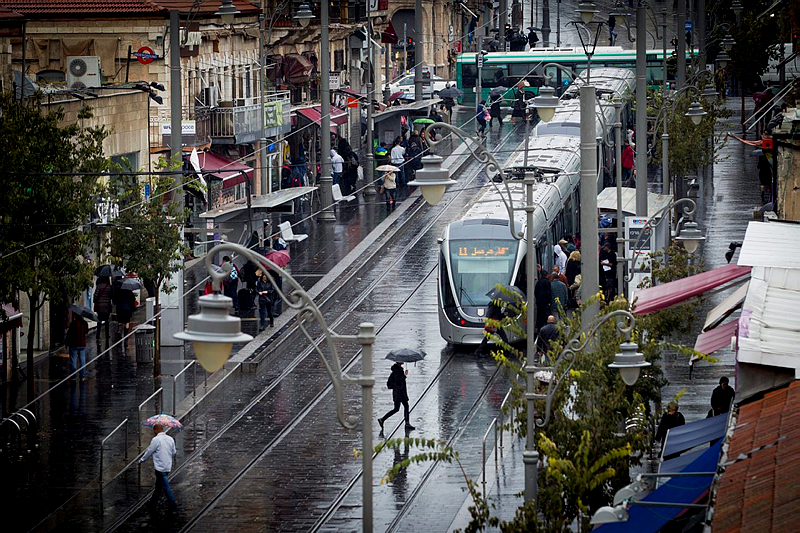As Jerusalem continues to modernize, growing in wealth and beauty, the ancient structures remain intact as a symbol of the eternity of the Jewish people.
Few cities are as historically, spiritually and culturally rich as the city of Jerusalem, where the Old City meets the modern world.
Walking through the city’s cobbled streets, it is not uncommon to find ancient ruins and artifacts hidden among the modern buildings and parks. The city’s residents continually build the future with constant reminders of the rich history of Jerusalem, creating a bridge between their ancient ancestors and the remarkable return of the Jewish people to their eternal capital.
The unique character embodied by the modern city of Jerusalem includes the blending of rich ancient history with contemporary glory and the embracing of distinct cultures, nationalities and religions.
The walls of the Old City of Jerusalem, rebuilt by Suleiman the Magnificent in 1538, stand as an emblem of time and the struggle for control of the ancient city. Entering the Old City, one instantly feels a connection to history, to the Biblical Era and the thousands of years of worship, war and transformation that echo within its walls. One could easily spend three or four days exploring the ancient and more modern day artifacts of the Old City of Jerusalem and its surrounding areas.
Exiting the city walls through Jaffa Gate, one is immediately confronted by the stark contrast of history and modernity,presented with luxurious housing complexes and hotels, art dealers and some of the finest shopping in the country. The recent development of the upscale Alrov Mamilla Avenue shopping promenade contrasts the mystical Old City of Jerusalem with an entirely modern counterpart. The new city center is filled with trendy nightlife, restaurants, and shopping, all adding an unmistakable 21st century flair to the mix.
Continues through the streets of Jerusalem, one will continually travel through time and place, as the neighborhoods constantly flip-flop between the old and the new. Many of the districts originally colonized by groups of immigrants from specific countries maintain the namesake of those early settlers. Ultra-Orthodox neighborhoods such as Meah Shearim and Geula transport the visitor back to old Europe, as hasidim rush through the streets in traditional European garb, unchanged since the days of their European ancestors.
Moments away, the core of Jerusalem comes alive at the cultural meeting point, Machane Yehuda, the largest and most ethnically diverse outdoor market in Israel, known as the shuk. Vendors selling everything from live fish, and produce, to clothing and gifts, engage customers in a lively spectacle which attracts visitors from the entire spectrum of the population. The modern-day city of Jerusalem is the home of the Israeli government (Knesset), Supreme Court, universities, museums and cultural centers, as well as industrial and technological enterprise, all of which contribute a fast-paced, contemporary pulse to the city.
Strolling through this exceptional city, it’s hard to imagine anything but a united Jerusalem. Despite the stark ideological differences between the city’s diverse inhabitants, there is a palpable feeling of unity among the members of all religions who appreciate the holiness of the city. In fact, the threat of a divided Jerusalem serves only to unite its admirers against this potential atrocity.
As Jerusalem continues to modernize, growing in wealth and beauty, the ancient structures remain intact as a symbol of the triumph and endurance of the Jewish people and their survival. While the majority of the city’s modern appearance does not attest to its rich and ancient history, there is no way to detach the ancient essence, which obviously unifies Jerusalem’s diverse peoples and traditions and makes it impossible to divide this sacred place.
By: United with Israel Staff
